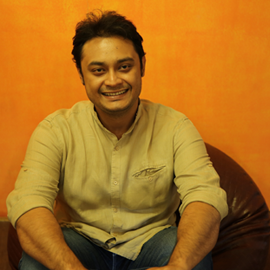Does DRDO stand for Delayed Research and Dismal Overruns?
Sourjya Bhowmick
| Updated on: 23 September 2015, 10:24 IST

TWEET THIS
The Defence Research and Development Organisation (DRDO) hit the headlines recently when it appointed its first woman director general. J Manjula will now head the organisation's electronics and communication systems cluster.
This is not the only rejig at the premier institute. Earlier, former DRDO head Avinash Chander was shown the door and another top scientist was denied extension. In fact, Prime Minister Narendra Modi has expressed his displeasure with the way projects have overshot deadlines.
How serious is the problem? Here we try to crack some key numbers about the only defence research body in India:
35
years
- is the estimated cumulative delay for about nine DRDO projects, including the second phase of the Light Combat Aircraft, the Astra air-to-air missile, the Kaveri aero engine and the Advanced Light-weight Torpedo.
- A total of Rs 16,707 crore - thrice the 2015 budget for the Ministry of Tribal Affairs - was sanctioned for these projects. Only about 30% was spent until January 2015.
- Among these, Kaveri was commissioned as far back as 1996.
- The delays are mostly due to denial of technology by advanced countries, lack of infrastructure, human resource crunch, complex designs and revised requirements.
15
- projects were commissioned by the DRDO in the past half a decade or so.
- These include the Unmanned Aerial Vehicle, Quick Reaction Air Missiles and Submarine Periscopes.
- The bills for these projects add up to Rs 4,825 crore; in comparison, the government has marked Rs 3,502 crore for its Swachh Bharat Abhiyan.
- The Medium Altitude Long Endurance Unmanned Aerial Vehicle alone will cost Rs 1,540 crore.
119,929
crore
rupees
- is the outlay for the 12th Five-Year plan for new DRDO projects; The biggest chunk will go to Missiles and Aeronautics.
- The money can fund 10 Apollo Mission - NASA's space program to land the first human being on the Moon - at today's rates.
- About 85% of the outlay has already been allocated.
- In comparison, the cost of DRDO's ongoing projects look paltry - a meager Rs 18,946 crore.
0.09
%
- of our GDP was spent on research and development by the defence ministry in 2013-14.
- That's not a blip. Spending on defence R&D has constantly been low. In the last five years, the most we spent was in 2009-10 - 0.13% of the GDP.
- Between 2009-10 and 2014-15, we have spent only 5%-7% of the total defence budget on R&D.
361
- scientists resigned from the DRDO (2009-October 2014) - an average of 60 a year. 2011 recorded the highest (86) number of resignations.
- The organisation employed about 7,809 people as of December 2014, against a sanctioned strength of 7,932. The headcount hasn't gone up since 2001 despite a jump in the number of projects.
- Most of those who left cited 'personal' and 'domestic' reasons. A standing committee report on defence states that increasing incentives and opportunities may arrest the attrition.
- However, resignations have declined considerably (less than 1% of total strength) after the recommendations of the Sixth Central Pay Commission and some incentives.
63,400
crore
rupees
- worth products and technologies have been developed by the DRDO in the last five decades.
- All that at an R&D cost of Rs 19,634 crore - less than half of the value added.
- You may blame DRDO on other counts, but when it comes to cost, it has constantly undercut the superpowers.
- USA's Unmanned Aerial Vehicle Reaper alone had a project cost of Rs 60,000 crore.







![BJP's Kapil Mishra recreates Shankar Mahadevan’s ‘Breathless’ song to highlight Delhi pollution [WATCH] BJP's Kapil Mishra recreates Shankar Mahadevan’s ‘Breathless’ song to highlight Delhi pollution [WATCH]](https://images.catchnews.com/upload/2022/11/03/kapil-mishra_240884_300x172.png)

![Anupam Kher shares pictures of his toned body on 67th birthday [MUST SEE] Anupam Kher shares pictures of his toned body on 67th birthday [MUST SEE]](https://images.catchnews.com/upload/2022/03/07/Anupam_kher_231145_300x172.jpg)






